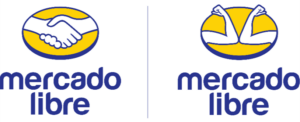How Mercadolibre became the biggest company in Latin America

During the covid pandemic of 2020 Mercadolibre came out as one of the biggest winners, experiencing growth of more than 100% in their volume of transactions and becoming the biggest company in all Latin America. But, how did this garage startup founded 20 years ago become the biggest online commerce and payments ecosystem in the region?
Mercadolibre (lit. “free market”) was founded in Argentina back in 1999, as an online consumer-to-consumer marketplace for pre-owned goods. While pursuing his MBA at Stanford, founder Marcos Galperin got inspired by the success eBay had had in the US and saw the opportunity to replicate eBay’s business model in Latin America. The original team worked in a small garage below a commercial building and was able to launch the bidding-based site after just a couple months.
The company experienced steep growth during its first years, despite the catastrophic effect of the dot-com bubble burst on the industry. Mercadolibre became public in 2007 (NASDAQ: MELI), expanded internationally across the region, and expanded its business model to offer a much more effective shopping experience.
Today, Mercadolibre has operations in more than 15 countries in Latin America, and more than 11,000 employees. Its stock experienced an unprecedented ~200% price increase during 2020, leading to a market cap of $82 billion, and to it becoming the biggest Latin American company.

Along the years, the company has expanded into several different solutions, always following their mission to democratize commerce and advance financial inclusion. Currently, Mercadolibre main business units are:
- Mercadolibre (marketplace): It is still the core of the company. Along the years, the site has evolved to include reviews, payments processing, financing, and shipping and fulfillment solutions.Since the beginning the Marketplace experienced the problem of disintermediation. Both sellers and buyers found all sort of creative ways to bypass the platform’s commissions and connect outside the site.The company could finally (although not totally) eradicate disintermediation by integrating their own payment processing and shipping service in the buyer’s journey, apart from ensuring the delivery of the items bought. Nowadays, it’s not uncommon to find a retailer who asks its customers to place their orders over Mercadolibre, even when the contact started in person or through other channels.The Marketplace has slowly evolved from bids of pre-owned goods, to big professional sellers offering new items, with fast shipping and free returns.
- Mercado Shops: Based on the forementioned marketplace, retailers can easily build their own ecommerce platforms, using their own branding and design. Orders are stilled processed by Mercadolibre, often using their fulfillment and their payments platform.
- Mercado Envios: Fast and seamless shipments across the different geographies, using their own warehouses as the backbone of the system and a wide network of logistic operators. Since 2020 Mercadolibre operates its own planes fleet in Brazil!
- Mercado Pago: As a payments processing solution, it’s the growth engine from the company, and currently one of the biggest fintech platforms in the region. Although it’s seamlessly integrated with the Marketplace, it’s also a standalone app and most of its transactions happen between individuals, or at brick-and-mortar stores.
Users can link their credit and debit cards to their Mercado Pago account, or simply fund it with cash at dedicated stores. As the penetration of digital means of payment is still relatively low in Latin America (in fact, a high percentage of the population doesn’t even have access to a bank account), Mercado Pago has adopted financial inclusion as its mission, and has given thousands of people access to saving and transacting online.Money available in one’s account can be used to pay via QR code at affiliated stores or can be instantly transferred to other users at no cost.Given that network effects are very high for Mercado Pago, the company launched the app together with a fierce incentives campaign (for both users and retailers) in order to overcome the chicken-or-egg dilemma. Mercadolibre deep pockets, together with the high number of transactions in the Marketplace helped accelerate growth and now Mercado Pago is the de facto payments app in many geographies.
- Mercado Credito: Built on Mercado Pago and the Marketplace, the service gives users access to financing using Mercadolibre information about users for credit scoring purposes.
Moving forward
As Mercadolibre continues to consolidate as the #1 ecommerce and fintech platform in Latin America, it is also under constant threat from some of the biggest players in the industry.
With a very similar business model, Amazon is already competing hand-to-hand with Mercadolibre in Mexico and Brazil. Mercadolibre’s experience navigating the complexities of business (and specially logistics) in Latin America has helped it remain competitive for now. On a curious side note, all Mercadolibre systems run on AWS.
Traditional banks are also fierce competitors to Mercado Pago. After loosing their first-mover advantage, many of the biggest banks in Latin America have launched their UX-centric apps and are trying to catch up by leveraging their many years of experience in the industry and their vast number of clients.
Although Mercadolibre phenomenal growth, its future remains uncertain. The constant threat from other ecommerce and fintech companies, and the unpredictable return to the “new normal” create, once more, a gigantic challenge for the company.
Sources
• Mercadolibre | Investor Relations. (2021).
MercadoLibre, Inc. http://investor.mercadolibre.com/
• Bloomberg – Mercadolibre invests in Brazil. (2021).
Bloomberg. https://www.bloomberg.com/news/articles/2021-03-01/mercadolibre-to-invest-1-8-billion-in-brazil-as-volume-surges
• Casino, F. (2019, August 30). La historia de Marcos Galperin: cómo fundó Mercado Libre.
https://www.iproup.com/innovacion/6975-la-historia-de-marcos-galperin-como-fundo-mercado-libre
• (2015, November 24). La historia del Mercado Libre.
Destino Negocio. https://destinonegocio.com/casos-de-exito/mercado-libre-lidera-las-operaciones-de-comercio-electronico-en-america-latina/



After the simulation exercise on network effects, I’m convinced that Mercadolibre’s first mover advantage will play to its strength. While I think there will be many competitors looking to replicate their business model, Mercadolibre’s brand name, the ease of use, the time Mercadolibre has had to thoroughly understand its consumers give it an upper-hand in this race. I’d love to hear more about what the different marketplace are doing to stand out and own parts of this marketshare.